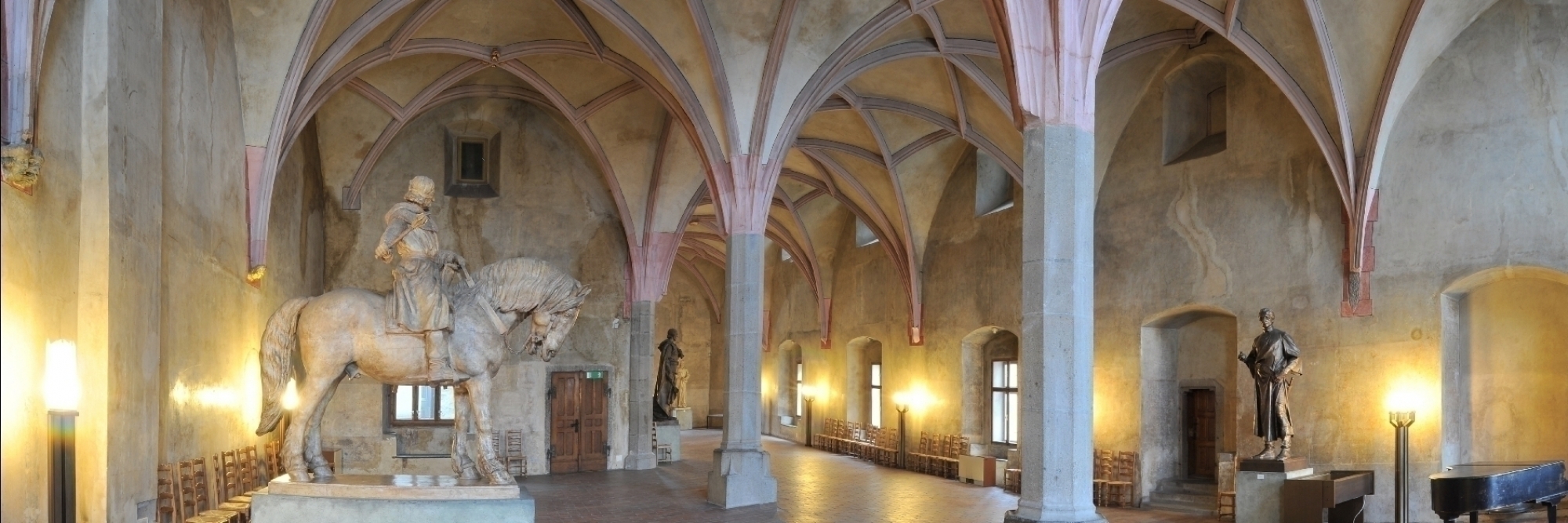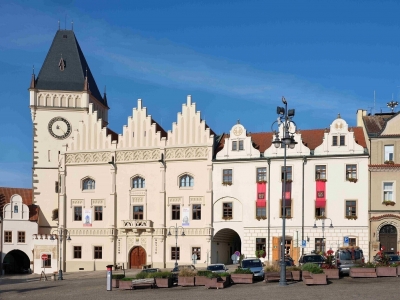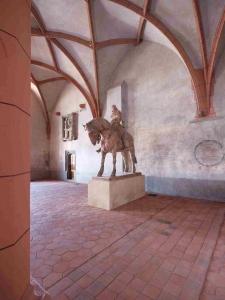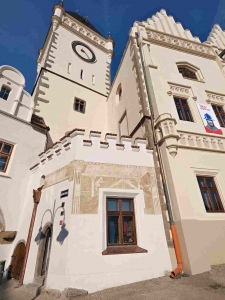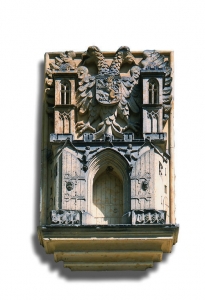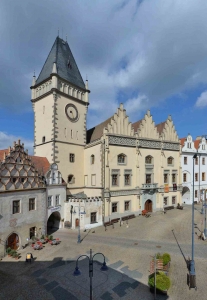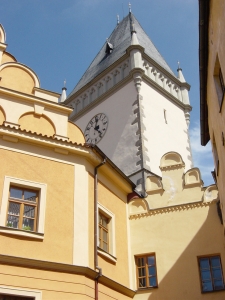Town Hall
Every royal town in Bohemia wanted to have a town hall that it could be proud of. Tábor was no exception and the town hall was a building of the highest importance. It was a place where the town council held its meetings, where the municipal law was upheld and where all significant events took place. The town hall was also a symbol of the prestige and dignity of Tabor, and that was why the citizens did their best when building it.
Today we can say that they were most successful in their effort. The town hall is one of the most precious buildings in the style of the late Gothic in Bohemian towns. Construction started in 1440 when the town council had three houses on the western side of the square pulled down thus getting sufficient space for the planned edifice. It is a large structure with four wings encircling a small yard. If you climb the steps from the yard and cross a stone gallery, you can enter the main rooms of the town hall. The big hall, sometimes also called a Palace is justly considered to be the most impressive public interior in Tábor. Its high ceiling with unrivalled tracery vault was erected after most of the former second floor had been pulled down. The vault is supported by two polygonal columns. There are numerous small reliefs that decorate column brackets and vault keys. According to a legend the two men’s heads on one of the keys represent Jan Žižka and Prokop Holý - the most famous captains of the Hussite troops. The town seal presented to Tábor by the Emperor and Czech King Sigismund of Luxembourg was used as a model for the coat of arms which is hanging on the left wall near the window. Expert skills were required from the craftsmen to produce such a fine piece of art. In the frame of the coat of arms you can find a statue of Jan Hus, one of the first sculptures depicting the famous religious reformer. Worth noticing is also the coat of arms of the Czech Kingdom placed on one of the vault keys. Both the coats of arms emphasise the majesty of the place. On the other hand, small gilded sculptures on arch ribs prove that our forefathers did not lack a sense of humour. A legend has it that the artist made the sculpture of a man with naked buttocks because he wanted revenge on the town council as they were very stingy and did not pay the artist properly.
The construction of the Palace and of the whole building is ascribed to the architect and stonemason Wendell Roskopf who probably came from Lužnice. His participation in construction of the edifice is proved by an inscription and a mark on the coat of arms which bears date - 1515 – 1516. The town hall was finished in the year 1521. In the second half of the 17th century the town hall, having been damaged during the Thirty Years' War, was altered according to Antonio de Alfieri's design which was influenced by the Baroque style. A hundred years later, in 1878, the architect Josef Niklas tried to return the town hall its late Gothic appearance. Since then the building has not undergone any major alterations.
Right behind the massive front door you can find the entrance to the underground tunnels. Exposition of the Hussite Museum is situated in most rooms of this building. The largest and most representative hall is reserved for important cultural events while in adjoining rooms are galleries.
Contact
Žižkovo náměstí 1, Tábor 390 01
+420 774 059 263
 Sights
Sights
